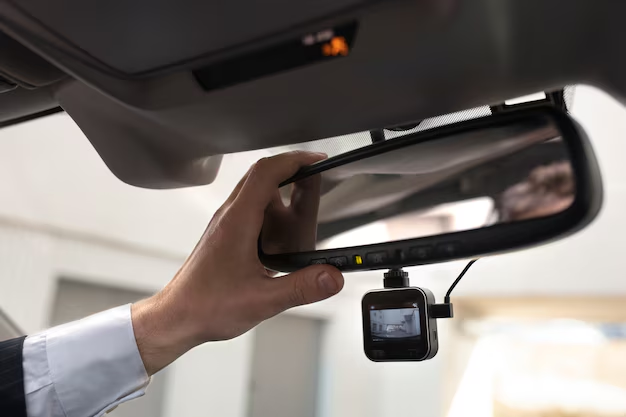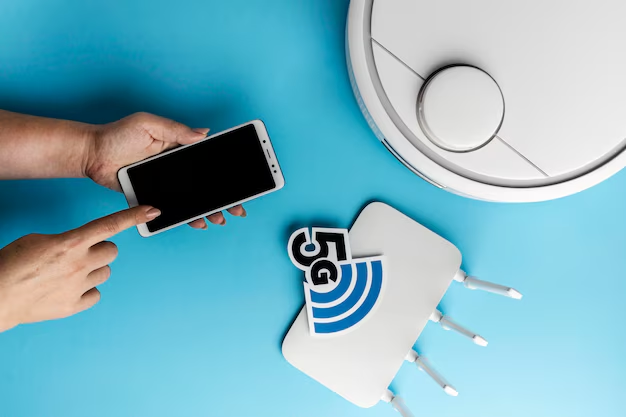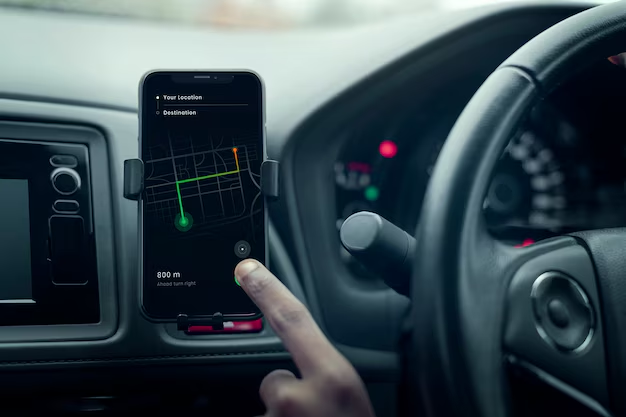Vehicle tracking systems are an essential tool for both individual and business operations in an era of efficiency and security needs. These monitoring systems transformed traditional fleet management by providing instant vehicle feedback that leads to enhanced operational safety and reduced expenses.
The real-time data capabilities of these tracking solutions improve organizational quality decisions while enhancing visibility and streamlining logistical operations.
In order to tackle contemporary problems, vehicle tracking systems continue to adapt by incorporating creative solutions as industries change and the need for seamless communication increases.
Although distinct in purpose, these tracking systems help form a connected transport environment by meeting both logistics requirements and providing security for individual drivers.
This article examines seven emerging technological trends that propel vehicle tracking development while advancing transportation solutions through precise, smart control systems.
1. Smart Dash Cams

Individuals and commercial operators are speedily adopting smart dash cams that integrate with vehicle tracking solutions since they prove to be efficient and effective at recording road incidents visually. Additionally, to improve tracking and safety, these cameras employ cutting-edge features like AI and IoT connection.
Features and Benefits
- Real-time Video Monitoring: Real-time surveillance features allow fleet managers to check inside and outside of vehicles for safety purposes, which protects drivers and their cargo.
- AI-powered Analytics: Advanced dash cam systems use video feed analysis to spot rash driving, sleepiness, and risky activities, along with giving operators immediate warning notifications.
- Incident Recording: Prior to minor or severe vehicle accidents, dash cam systems operate independently to record data that becomes valuable evidence for insurance needs and court proceedings.
- GPS Integration: Dash cam technology uses integrated GPS functions to add precise location information onto recorded video files, thus showing comprehensive incident details and navigated routes.
- Cloud Storage: Today’s SD dashcams feature automatic cloud storage capabilities that protect recordings by making them accessible anytime and anywhere.
The combination of dash cams with vehicle tracking systems improves accountability levels, operational efficiency, and security protection, making them crucial tools for fleet operators alongside individual vehicle users.
2. Global Positioning System (GPS) Technology
A majority of present-day vehicle tracking systems rely on GPS functions as their central operational component. Vehicles using this satellite-based navigation system receive detailed location updates for real-time path optimization and current position identification.
Improved GPS technology delivers more accurate signal quality while integrating with satellites such as GLONASS (Russia) and Galileo (Europe), enhancing overall system reliability and coverage range.
Key Benefits
- Accurate tracking, even in remote areas
- The system provides instant updates about vehicle position along with real-time motion data.
- The optimization of delivery routes increases both time efficiencies and fuel efficiency improvements.
New technology developments in GPS augmentation systems help to enhance precision by improving location accuracy for both autonomous vehicles and drone delivery applications.
3. Telematics Systems
Telematics enables the integration of telecommunications systems and informatics features to process and study vehicle data. Current telematics systems utilize hardware sensors with software platforms to deliver data-based insights about vehicles, driving habits, and vehicle fuel performance.
Applications
- Engine status monitoring, together with predictive maintenance analysis
- Tracking driving patterns such as speeding or harsh braking
- Embedded connectivity lets insurance providers deploy usage-based insurance programs (UBI).
Improvements in digital telematics have led to cloud-based solutions that allow fleet managers remote access to vehicle data while fostering better operational decisions and efficiency throughout their operations.
4. Internet of Things (IoT)

Vehicle tracking systems underwent evolutionary changes with IoT as their central supporting component. Through IoT technology, vehicles become linked with sensors and management platforms to exchange data effectively while establishing smooth communication pathways.
Impact on Vehicle Tracking
- Sensors track important parameters, including tire pressure and engine temperature, alongside cargo conditions.
- Enhanced safety with real-time alerts for accidents or breakdowns.
- Remote control features, such as engine immobilization, in case of theft.
The Internet of Things enables smart city projects through its ability to improve urban traffic systems.
5. Artificial Intelligence (AI) and Machine Learning (ML)
AI, along with ML technologies, helps vehicle tracking evolve through predictive analytics alongside automated intelligent systems. Through analyzing extensive datasets that tracking systems produce, these technologies detect patterns while making outcome predictions and providing automated solutions.
Use Cases
- Artificial intelligence helps detect possible traffic jams before suggesting new travel paths.
- Data analysis of how drivers operate their vehicles produces suggestions for safe driving education.
- The application of dynamic scheduling techniques results in optimized fleet operations.
As a result of learning from user interactions and continually refining their recommendations, AI-powered tracking systems are becoming more user-friendly.
6. 5G Connectivity

Vehicle tracking systems will be completely different with the introduction of 5G networks. With extremely low latency and fast data transfer, 5G improves tracking platforms’ real-time capabilities.
Advantages of 5G
- Increased speed and dependability of data transfer between control centers and vehicles.
- Enhanced precision for semi-autonomous and autonomous car systems.
- Support for applications requiring large bandwidth, such as video surveillance.
In addition, 5G connectivity facilitates vehicle-to-everything (V2X) connectivity, which increases efficiency and safety by enabling cars to connect with infrastructure.
7. Blockchain Technology
Blockchain is becoming a vital component of transparent and safe car monitoring systems. It is perfect for handling sensitive data since it is tamper-proof and decentralized.
Uses for Tracking Vehicles
- Location data is stored securely to avoid manipulation
- Transparent documentation of a car’s history for insurance or selling purposes
- Enabling smart contracts for compliance and automatic billing
In supply chain logistics, where tracking the flow of items is essential, blockchain improves stakeholder confidence.
Bottomline
The need for efficiency, security, and sustainability is propelling the fast advancement of the technology underlying vehicle monitoring systems.
Augmented reality (AR) visuals, more precise geofencing, and more interaction with autonomous driving systems are some of the characteristics you may anticipate as these technologies advance.
A more connected and effective world will result from these advances, which will completely change how companies run and how people use car monitoring.





